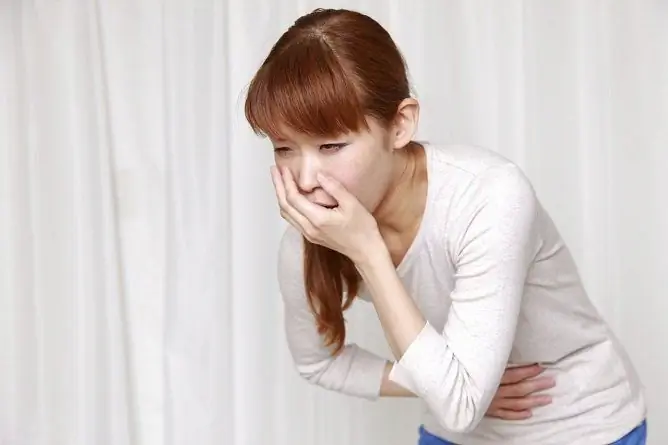- Author Rachel Wainwright [email protected].
- Public 2023-12-15 07:39.
- Last modified 2025-11-02 20:14.
Amblyopia
General characteristics of the disease

Amblyopia or "lazy eye" is a fairly common ophthalmic disease. It occurs due to pathologies in the development of the visual system and leads to a decrease in visual acuity. Most often, with amblyopia in adults or children, only one eye needs vision correction. In this case, the disease is called unilateral. With severe hyperopia, myopia, or other pathologies in both eyes, amblyopia is called bilateral.
Often, a person does not even realize that he has amblyopia, and one of his eyes does not see well. The patient's brain gets used to perceive information from only one eye. This organ of vision gradually becomes the leading one, and the second eye, not participating in the process of vision, begins to deviate to the side. So with amblyopia, strabismus develops - a fairly common complication of the disease.
Amblyopia can develop against the background of acquired defects of the cornea, lens of the eye or eyelid as a result of injuries, neoplasms, etc. However, the most common form of pathology is congenital amblyopia, which is diagnosed at an early age.
Amblyopia in children
Amblyopia in children is usually caused by a family history of hyperopia, astigmatism, or other vision problems. The disease is often diagnosed in premature babies or babies with low birth weight.
Amblyopia in children is fraught with serious complications. The unequal work of the eyes leads to a distortion of the information entering the child's brain. As a result, the baby deforms the visual cortex, and its neurons stop developing. Therefore, in the case of late treatment of amblyopia in children, the vision of young patients may remain low, even despite the elimination of the causes of the disease.
With timely therapy, amblyopia defects are reversible. And the earlier the treatment begins, the more favorable the prognosis. So, for example, with amblyopia in children with unilateral congenital cataract, the best results are achieved in the treatment of the disease during the first months of the child's life.
Types and degrees of amblyopia
Amblyopia in adults and children with visual acuity up to 0.8-0.4 is called a low-grade disease. Amblyopia with a vision coefficient of 0.3-0.2 is considered a moderate pathology. With amblyopia with vision indices of 0.1-0.04 and below, a diagnosis of "high" or "very high degree of amblyopia" is made.
Depending on the mechanism of development of the disease, it is customary to distinguish dysbinocular or refractive amblyopia. The first type of the disease develops as a result of chronic disorders of binocular vision against the background of strabismus. Refractive amblyopia is caused by ametropia (violation of the refractive abilities of the eye) with myopia or farsightedness.
Clouding of the eye (cataract or thorns) can cause another type of amblyopia - obscuration. The anisometropic form of the disease is a consequence of different refraction of the eyes in astigmatism caused by defects in the lens or cornea.
Diagnosis and treatment of amblyopia

The diagnosis of "amblyopia" is established by an ophthalmologist at a routine examination of a child at 1.3 and 6 months. During it, the doctor checks the visual acuity, movement and position of the eyes. Amblyopia in adults is diagnosed during a prophylactic examination or if the patient complains of vision problems. During the diagnosis, reverse and direct ophthalmoscopy is used, as well as various tests to check visual acuity, refractive quality and field of view.
The traditional treatment for amblyopia is occlusion. This is the name of the forced exclusion of a healthy eye from the process of vision with the help of special glasses with a plastic or rubber lens for a healthy eye. The treatment regimen for amblyopia by the occlusion method is chosen by the doctor.
It is also possible to correct vision with the help of video-computer auto-training (VKA), eye stimulation methods according to Avetisov by means of blinding retinal irritation or according to Kuppers using sequential images.
In the treatment of amblyopia in adults and children, various therapeutic methods are also used: wearing massaging glasses, ultrasonic and infrared laser therapy, vacuum massage, electrical stimulation and magnetotherapy.
YouTube video related to the article:
The information is generalized and provided for informational purposes only. At the first sign of illness, see your doctor. Self-medication is hazardous to health!






